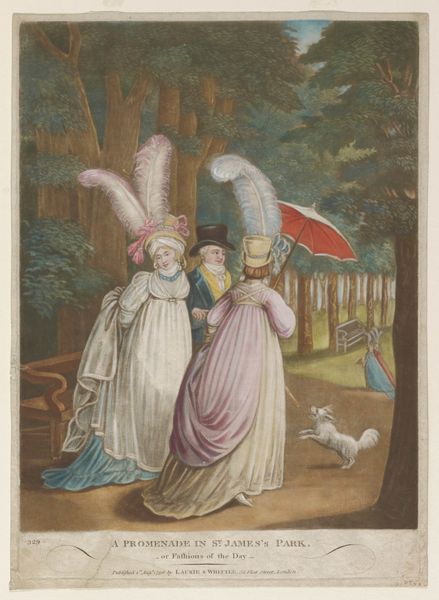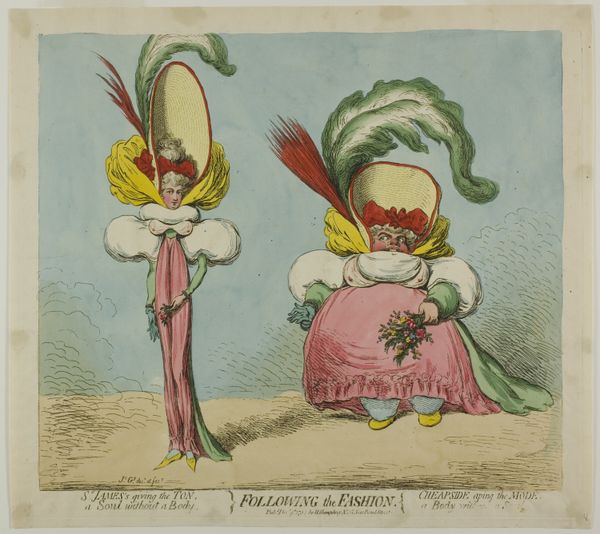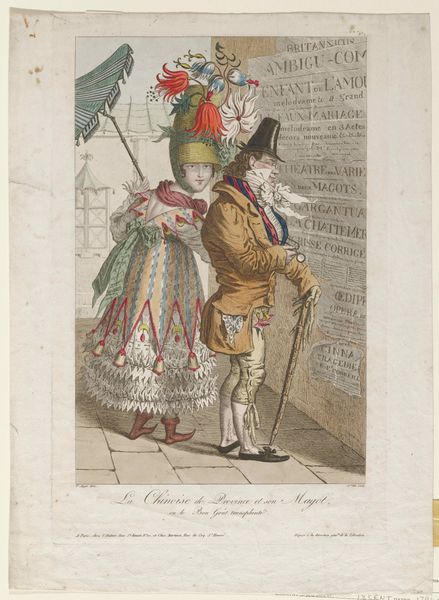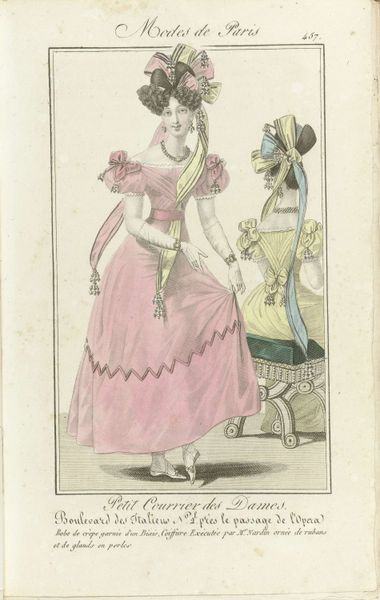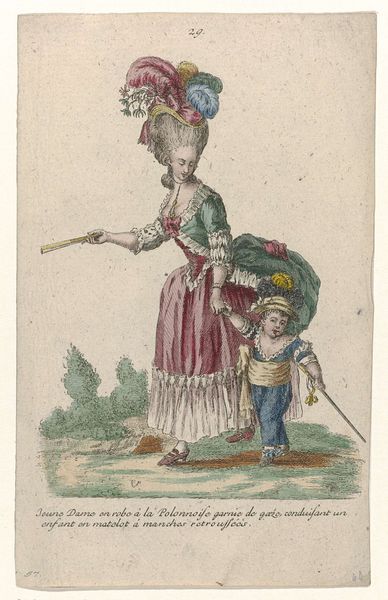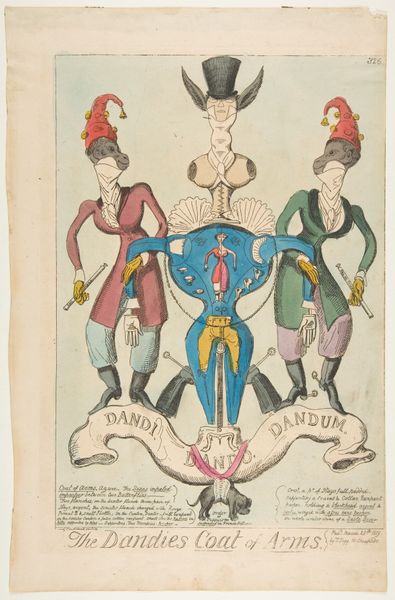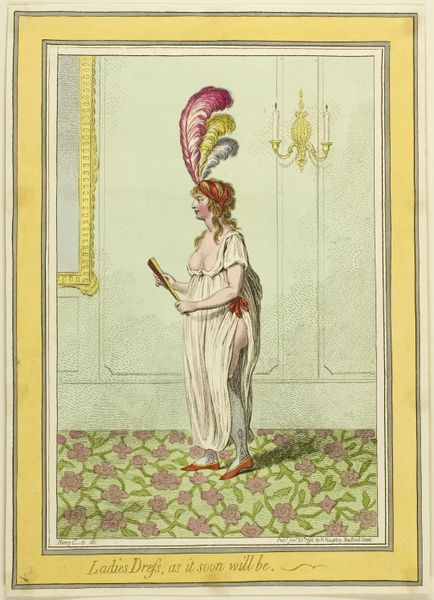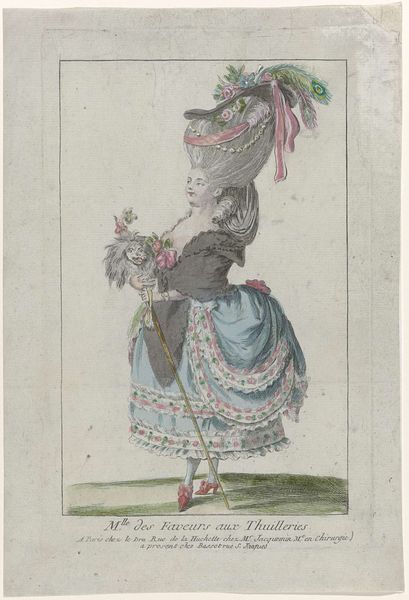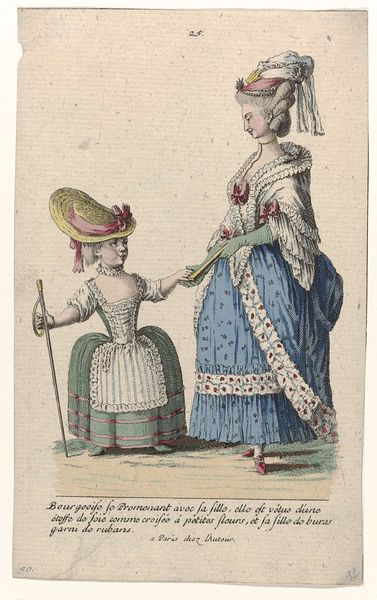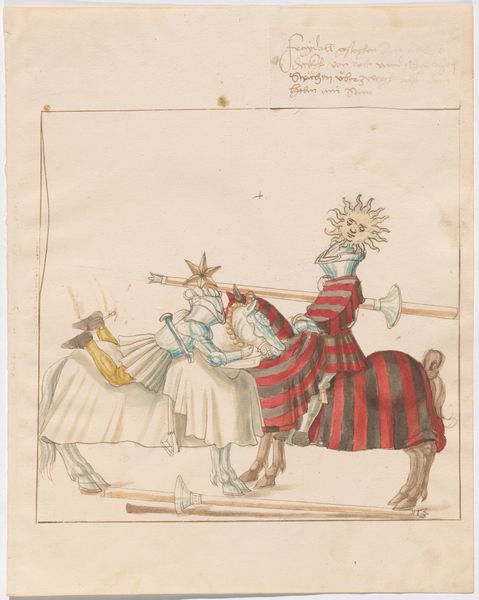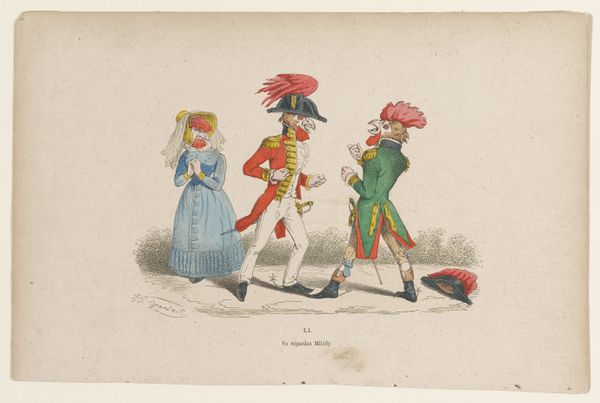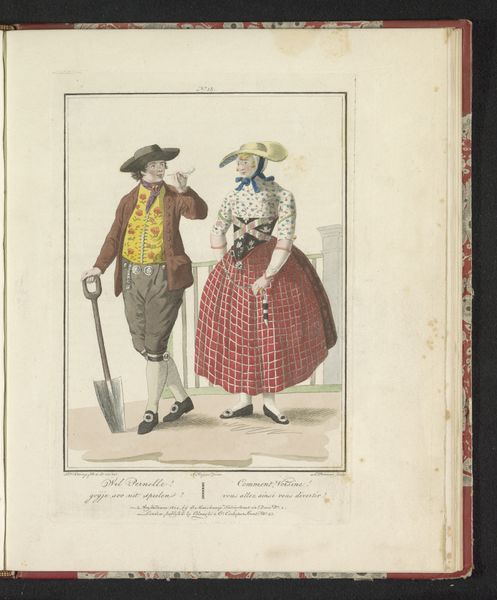
hand-colored-etching, print, etching, watercolor
#
hand-colored-etching
#
water colours
#
neoclassicism
# print
#
etching
#
caricature
#
watercolor
#
coloured pencil
#
england
#
15_18th-century
Dimensions: 15 1/2 x 13 1/4 in. (39.37 x 33.66 cm) (plate)
Copyright: Public Domain
Editor: So, this is "The Graces of 1794," a hand-colored etching by S.W. Fores, residing here at the Minneapolis Institute of Art. It’s, well, it’s quite striking. The exaggerated figures and vibrant colors jump out immediately. I’m intrigued, but also a bit unsure what to make of it. What do you see in this piece, from a formalist perspective? Curator: Let us observe the structural relationships at play. Notice how the composition relies heavily on symmetry, achieved through the positioning of the three figures. The color palette, though vibrant, employs complementary hues, such as the blues and yellows, creating visual harmony. Furthermore, consider the linearity of the etching technique. How do these formal elements contribute to the work's overall impact? Editor: The symmetry does create a sense of balance, but the individual eccentricities of each figure disrupt it. And, is the artist using the etching to comment on the nature of portraiture itself? Curator: An astute observation. Indeed, the tension between symmetry and asymmetry, between idealized form and exaggerated feature, is critical to the artwork’s interpretation. The linearity certainly guides our perception. And these are caricatures that play with—perhaps even mock—the conventions of Neoclassical portraiture. The etching technique serves not merely as a representational tool, but as a medium for satirical commentary. Notice the exaggerated lines and forms and colors of dress and hair. What semiotic interpretations might arise? Editor: So, by exaggerating and playing with color, line and form Fores isn’t just representing, but actually critiquing or subverting the ideal of ‘grace’ in 1794? I hadn't considered the possibility of satire inherent in these elements alone. Curator: Precisely. The piece’s value emerges from its formal structure: it generates meaning from the interplay of line, color and form. And consider the role of the viewer in interpreting such commentary. Editor: That is certainly a new appreciation for this work from just studying line, form and composition alone. Thank you! Curator: Indeed.
Comments
No comments
Be the first to comment and join the conversation on the ultimate creative platform.

